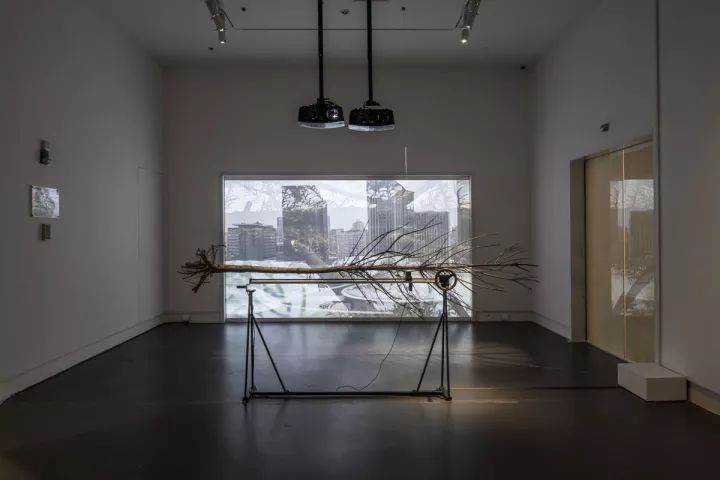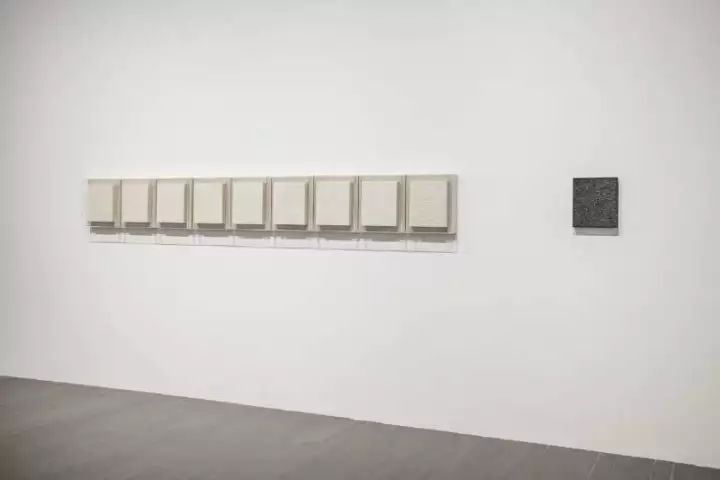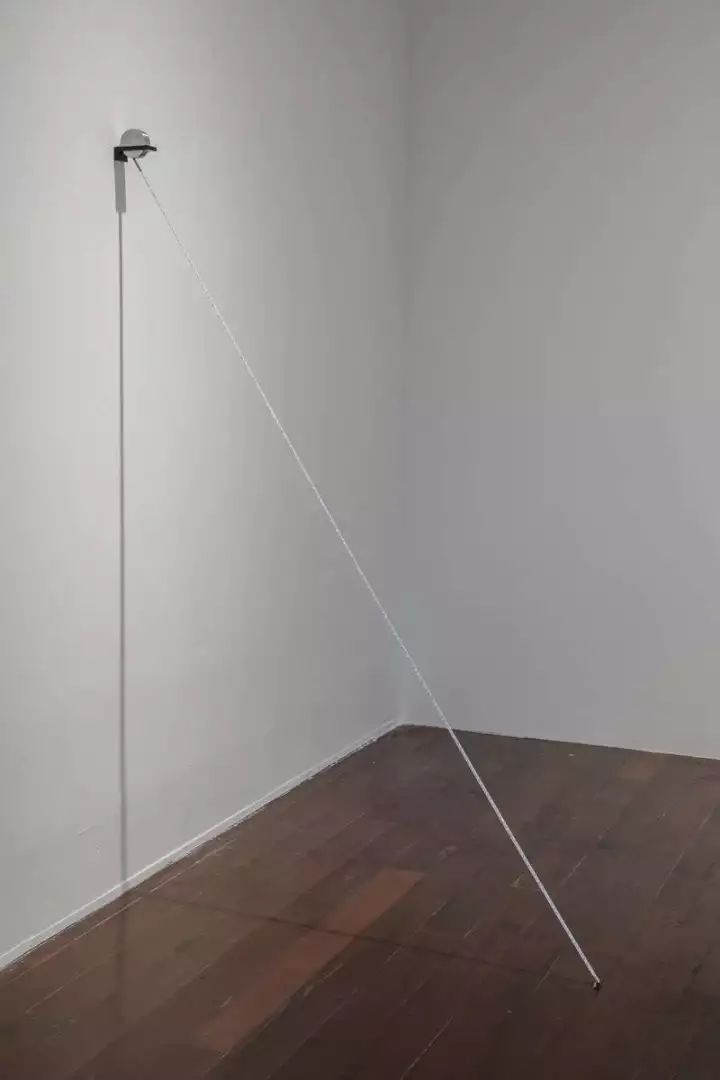HU Weiyi and LIU Ren are participating “Shanghai Galaxy II” at Yuz Museum. The exhibition takes the native perspecitive of Shanghai to produce spatial texts and shape local narratives, thus examining the artistic ecology in the city. Born and brought up, now living and working in Shanghai, HU Weiyi and LIU Ren integrate their personal history into the material elements and physical structures which are time-based from their practices as the output to respond to the transformation of paradigms and the failure of concepts in the light of the immediate situation of globalization.
Exhibited Works

胡为一,《植物简史》,2016年,影像装置(轨道、手轮、摄像头、激光测距传感器、电脑、树枝),尺寸可变。“上海星空II”展览现场,2017年,余德耀美术馆,上海。图片由余德耀美术馆允惠。摄影:JJY Photo | HU Weiyi, A Brief History of Plant, 2016, video installation (track, hand wheel, camera, laser distance sensor, pc, tree branch), dimensions variable. View of “Shanghai Galaxy II,” 2017, Yuz Museum, Shanghai. Courtesy of Yuz Museum. Photo: JJY Photo
A Brief History of Plant stems from the idea of daily routine which dominated HU Weiyi’s practice during his participation at the Glenfiddich Artists in Residence Programme in 2016, demonstrating the exploration upon temporal expressions. The camera installed on the track is keeping a record in time about the details of the parallel tree branch. Controlled by the hand wheel, the camera captures the growing memories of the tree branch from left to right. All these details are projected on the near curtain where the cross montage of the urban landscapes of Shanghai, the place that nurtures the artist, is changing over. As a matter of material evidence that signifies the existence of time being, the tree branch relates to its surroundings. The fluctuation of urban landscapes speaks to nature and gradually contributes to random narrations which possibly come from personal history yet independent of narrative. In A Brief History of Plant, the artist provides a performative model of non-linear editing of his consciousness in concurrence with linear displacement of his body.

刘任,《一个人需要多少土地》,2013年,综合材料(草纸丙烯),30 × 25.5 × 4 厘米 × 10。“上海星空II”展览现场,2017年,余德耀美术馆,上海。图片由余德耀美术馆允惠。摄影:JJY Photo | LIU Ren, How Much Land Does a Man Need, 2013, mixed media (acrylic on straw paper), 30 × 25.5 × 4 cm × 10. View of “Shanghai Galaxy II,” 2017, Yuz Museum, Shanghai. Courtesy of Yuz Museum. Photo: JJY Photo

刘任,《6英尺》,2016年,不锈钢卷尺UV印刷,尺寸可变。“上海星空II”展览现场,2017年,余德耀美术馆,上海。图片由余德耀美术馆允惠。摄影:JJY Photo | LIU Ren, 6 Feet, 2016, UV printing on stainless steel tape, dimensions variable. View of “Shanghai Galaxy II,” 2017, Yuz Museum, Shanghai. Courtesy of Yuz Museum. Photo: JJY Photo

刘任,《6英尺》(局部),2016年,不锈钢卷尺UV印刷,尺寸可变。“上海星空II”展览现场,2017年,余德耀美术馆,上海。图片由余德耀美术馆允惠。摄影:JJY Photo | LIU Ren, 6 Feet (detail), 2016, UV printing on stainless steel tape, dimensions variable. View of “Shanghai Galaxy II,” 2017, Yuz Museum, Shanghai. Courtesy of Yuz Museum. Photo: JJY Photo
How Much Land Does a Man Need and 6 Feet stems Leo Tolstoy’s short story How Much Land Does a Man Need. In How Much Land Does a Man Need, LIU Ren attempts to transform the text of the story reported by Hiroshi Sugimoto into formal writing on straw paper. The ultimate touch by hand and the upholding paper of really low price appeal to a strong contrast to work in concert with the tremendous conflict between one’s physical and mental needs. In a similar vein, the artist tries to print the number of words of the reported story on a steel tape in 6 Feet. 6 feet is the length of the male body which was buried in the story. It is also the very limited amount of placement that exists in the vast land occupied by him.
The exhibition will last until 11 February 2018.

